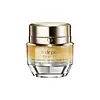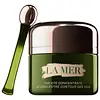What's inside
What's inside
 Key Ingredients
Key Ingredients

 Benefits
Benefits

 Concerns
Concerns

 Ingredients Side-by-side
Ingredients Side-by-side

Water
Skin ConditioningPentaerythrityl Tetraethylhexanoate
EmollientButylene Glycol
HumectantGlycerin
HumectantSqualane
EmollientIsododecane
EmollientDipropylene Glycol
HumectantBehenyl Alcohol
EmollientDimethicone
EmollientMicrocrystalline Wax
Emulsion StabilisingDiphenylsiloxy Phenyl Trimethicone
Skin ConditioningTrehalose
HumectantPEG/PPG-14/7 Dimethyl Ether
Skin ConditioningHydrogenated Polyisobutene
EmollientDimethylacrylamide/Sodium Acryloyldimethyltaurate Crosspolymer
Potassium Methoxysalicylate
BleachingStearyl Alcohol
EmollientHydrogenated Palm Oil
EmollientBeheneth-20
EmulsifyingPhenoxyethanol
PreservativeMyristyl Myristate
EmollientDimethicone/Phenyl Vinyl Dimethicone Crosspolymer
Elaeis Guineensis Kernel Oil
EmollientElaeis Guineensis Oil
EmollientDisodium EDTA
Tocopheryl Acetate
AntioxidantPhytosteryl/Octyldodecyl Lauroyl Glutamate
Skin ConditioningSodium Citrate
BufferingBHT
AntioxidantDipotassium Glycyrrhizate
HumectantParfum
MaskingSodium Metabisulfite
AntioxidantCitric Acid
BufferingSodium Metaphosphate
BufferingSodium Acetylated Hyaluronate
HumectantGlycyrrhiza Glabra Root Extract
BleachingHexyl Cinnamal
PerfumingAlpha-Isomethyl Ionone
PerfumingCitronellol
PerfumingCI 77492
Cosmetic ColorantLimonene
PerfumingLinalool
PerfumingCentaurea Cyanus Flower Extract
AstringentOlea Europaea Leaf Extract
PerfumingIris Florentina Root Extract
MaskingPaeonia Albiflora Root Extract
Skin ConditioningGeraniol
PerfumingSanguisorba Officinalis Root Extract
CleansingCrataegus Monogyna Flower Extract
Skin ConditioningBenzyl Benzoate
AntimicrobialSerine
MaskingInositol
HumectantCI 77491
Cosmetic ColorantRetinyl Acetate
Skin ConditioningRetinyl Palmitate
Skin ConditioningTocopherol
AntioxidantPotentilla Erecta Root Extract
Skin ConditioningHelianthus Annuus Seed Oil
EmollientZea Mays Oil
EmulsifyingRosmarinus Officinalis Leaf Extract
AntimicrobialTheanine
EmollientRosa Roxburghii Fruit Extract
TonicSophora Angustifolia Root Extract
Skin ConditioningPolyquaternium-51
Skin ConditioningBenzoic Acid
MaskingHydrolyzed Silk
HumectantRubus Suavissimus Leaf Extract
Skin ConditioningHydrolyzed Conchiolin Protein
Skin ConditioningBupleurum Falcatum Root Extract
Skin ConditioningWater, Pentaerythrityl Tetraethylhexanoate, Butylene Glycol, Glycerin, Squalane, Isododecane, Dipropylene Glycol, Behenyl Alcohol, Dimethicone, Microcrystalline Wax, Diphenylsiloxy Phenyl Trimethicone, Trehalose, PEG/PPG-14/7 Dimethyl Ether, Hydrogenated Polyisobutene, Dimethylacrylamide/Sodium Acryloyldimethyltaurate Crosspolymer, Potassium Methoxysalicylate, Stearyl Alcohol, Hydrogenated Palm Oil, Beheneth-20, Phenoxyethanol, Myristyl Myristate, Dimethicone/Phenyl Vinyl Dimethicone Crosspolymer, Elaeis Guineensis Kernel Oil, Elaeis Guineensis Oil, Disodium EDTA, Tocopheryl Acetate, Phytosteryl/Octyldodecyl Lauroyl Glutamate, Sodium Citrate, BHT, Dipotassium Glycyrrhizate, Parfum, Sodium Metabisulfite, Citric Acid, Sodium Metaphosphate, Sodium Acetylated Hyaluronate, Glycyrrhiza Glabra Root Extract, Hexyl Cinnamal, Alpha-Isomethyl Ionone, Citronellol, CI 77492, Limonene, Linalool, Centaurea Cyanus Flower Extract, Olea Europaea Leaf Extract, Iris Florentina Root Extract, Paeonia Albiflora Root Extract, Geraniol, Sanguisorba Officinalis Root Extract, Crataegus Monogyna Flower Extract, Benzyl Benzoate, Serine, Inositol, CI 77491, Retinyl Acetate, Retinyl Palmitate, Tocopherol, Potentilla Erecta Root Extract, Helianthus Annuus Seed Oil, Zea Mays Oil, Rosmarinus Officinalis Leaf Extract, Theanine, Rosa Roxburghii Fruit Extract, Sophora Angustifolia Root Extract, Polyquaternium-51, Benzoic Acid, Hydrolyzed Silk, Rubus Suavissimus Leaf Extract, Hydrolyzed Conchiolin Protein, Bupleurum Falcatum Root Extract
Algae Extract
EmollientWater
Skin ConditioningDimethicone
EmollientIsododecane
EmollientGlycerin
HumectantHydrogenated Polyisobutene
EmollientTrisiloxane
Skin ConditioningCaprylic/Capric/Myristic/Stearic Triglyceride
EmollientVinyl Dimethicone/Methicone Silsesquioxane Crosspolymer
Caprylic/Capric Triglyceride
MaskingMaris Sal
Skin ConditioningYeast Extract
Skin ConditioningHelichrysum Arenarium Extract
AntiseborrhoeicSesamum Indicum Seed Oil
EmollientMedicago Sativa Seed Powder
Skin ConditioningHelianthus Annuus Seedcake
AbrasivePrunus Amygdalus Dulcis Seed Meal
AbrasiveEucalyptus Globulus Leaf Oil
PerfumingSodium Gluconate
Skin ConditioningCopper Gluconate
Skin ConditioningCalcium Gluconate
HumectantMagnesium Gluconate
Skin ConditioningZinc Gluconate
Skin ConditioningTocopheryl Succinate
AntioxidantNiacin
SmoothingSesamum Indicum Seed Powder
Skin ConditioningAsparagopsis Armata Extract
Skin ProtectingLaminaria Digitata Extract
Skin ProtectingSaccharum Officinarum Extract
MoisturisingPhytosphingosine
Skin ConditioningEcklonia Cava Extract
Skin ConditioningCorallina Officinalis Extract
Skin ConditioningSodium Hyaluronate
HumectantSigesbeckia Orientalis Extract
Skin ConditioningPolygonum Fagopyrum Seed Extract
Skin ConditioningBrassica Campestris Seed Oil
Skin ConditioningPolyglyceryl-3 Diisostearate
EmulsifyingGlycyrrhiza Glabra Root Extract
BleachingAscophyllum Nodosum Extract
Skin ConditioningCitrus Aurantifolia Peel Extract
CleansingCucumis Sativus Fruit Extract
EmollientAcetyl Hexapeptide-8
HumectantAlthaea Officinalis Root Extract
Skin ConditioningOryza Sativa Bran Extract
Skin ConditioningTocopheryl Acetate
AntioxidantSaccharomyces Lysate Extract
HumectantMacadamia Integrifolia Seed Oil
Skin ConditioningDipeptide-2
Skin ConditioningGlyceryl Triacetyl Ricinoleate
EmollientPalmitoyl Tetrapeptide-7
Skin ConditioningCaffeine
Skin ConditioningTetraacetylphytosphingosine
Skin ConditioningLactis Proteinum
Skin ConditioningAcetyl Glucosamine
Skin ConditioningTriethylhexanoin
MaskingSorbitol
HumectantHordeum Vulgare Extract
EmollientGlycine Soja Protein
EmulsifyingCholesterol
EmollientHydrolyzed Yeast Protein
Skin ConditioningIsononyl Isononanoate
EmollientPropylene Glycol Dicaprate
EmollientCetyl PEG/PPG-10/1 Dimethicone
EmulsifyingCaprylyl Glycol
EmollientSucrose
HumectantPolysilicone-11
Dimethicone Crosspolymer
Emulsion StabilisingDimethicone Crosspolymer-3
Skin ConditioningSilica
AbrasiveNylon-12
Trimethylsiloxysilicate
EmollientSteareth-20
CleansingCalcium Chloride
AstringentHesperidin Methyl Chalcone
AntioxidantPEG/PPG-18/18 Dimethicone
EmulsifyingAlumina
AbrasiveTriethoxycaprylylsilane
Hydrogenated Vegetable Oil
EmollientAlcohol Denat.
AntimicrobialPropanediol
SolventParfum
MaskingBHT
AntioxidantPhenoxyethanol
PreservativePotassium Sorbate
PreservativeChlorhexidine Digluconate
AntimicrobialSodium Benzoate
MaskingMica
Cosmetic ColorantCI 77891
Cosmetic ColorantAlgae Extract, Water, Dimethicone, Isododecane, Glycerin, Hydrogenated Polyisobutene, Trisiloxane, Caprylic/Capric/Myristic/Stearic Triglyceride, Vinyl Dimethicone/Methicone Silsesquioxane Crosspolymer, Caprylic/Capric Triglyceride, Maris Sal, Yeast Extract, Helichrysum Arenarium Extract, Sesamum Indicum Seed Oil, Medicago Sativa Seed Powder, Helianthus Annuus Seedcake, Prunus Amygdalus Dulcis Seed Meal, Eucalyptus Globulus Leaf Oil, Sodium Gluconate, Copper Gluconate, Calcium Gluconate, Magnesium Gluconate, Zinc Gluconate, Tocopheryl Succinate, Niacin, Sesamum Indicum Seed Powder, Asparagopsis Armata Extract, Laminaria Digitata Extract, Saccharum Officinarum Extract, Phytosphingosine, Ecklonia Cava Extract, Corallina Officinalis Extract, Sodium Hyaluronate, Sigesbeckia Orientalis Extract, Polygonum Fagopyrum Seed Extract, Brassica Campestris Seed Oil, Polyglyceryl-3 Diisostearate, Glycyrrhiza Glabra Root Extract, Ascophyllum Nodosum Extract, Citrus Aurantifolia Peel Extract, Cucumis Sativus Fruit Extract, Acetyl Hexapeptide-8, Althaea Officinalis Root Extract, Oryza Sativa Bran Extract, Tocopheryl Acetate, Saccharomyces Lysate Extract, Macadamia Integrifolia Seed Oil, Dipeptide-2, Glyceryl Triacetyl Ricinoleate, Palmitoyl Tetrapeptide-7, Caffeine, Tetraacetylphytosphingosine, Lactis Proteinum, Acetyl Glucosamine, Triethylhexanoin, Sorbitol, Hordeum Vulgare Extract, Glycine Soja Protein, Cholesterol, Hydrolyzed Yeast Protein, Isononyl Isononanoate, Propylene Glycol Dicaprate, Cetyl PEG/PPG-10/1 Dimethicone, Caprylyl Glycol, Sucrose, Polysilicone-11, Dimethicone Crosspolymer, Dimethicone Crosspolymer-3, Silica, Nylon-12, Trimethylsiloxysilicate, Steareth-20, Calcium Chloride, Hesperidin Methyl Chalcone, PEG/PPG-18/18 Dimethicone, Alumina, Triethoxycaprylylsilane, Hydrogenated Vegetable Oil, Alcohol Denat., Propanediol, Parfum, BHT, Phenoxyethanol, Potassium Sorbate, Chlorhexidine Digluconate, Sodium Benzoate, Mica, CI 77891
 Reviews
Reviews

Ingredients Explained
These ingredients are found in both products.
Ingredients higher up in an ingredient list are typically present in a larger amount.
BHT is a synthetic antioxidant and preservative.
As an antioxidant, it helps your body fight off free-radicals. Free-radicals are molecules that may damage your skin cells.
As a preservative, it is used to stabilize products and prevent them from degrading. Specifically, BHT prevents degradation from oxidation.
The concerns related to BHT come from oral studies; this ingredient is currently allowed for use by both the FDA and EU.
However, it was recently restricted for use in the UK as of April 2024.
Learn more about BHTDimethicone is a type of synthetic silicone created from natural materials such as quartz.
What it does:
Dimethicone comes in different viscosities:
Depending on the viscosity, dimethicone has different properties.
Ingredients lists don't always show which type is used, so we recommend reaching out to the brand if you have questions about the viscosity.
This ingredient is unlikely to cause irritation because it does not get absorbed into skin. However, people with silicone allergies should be careful about using this ingredient.
Note: Dimethicone may contribute to pilling. This is because it is not oil or water soluble, so pilling may occur when layered with products. When mixed with heavy oils in a formula, the outcome is also quite greasy.
Learn more about DimethiconeGlycerin is already naturally found in your skin. It helps moisturize and protect your skin.
A study from 2016 found glycerin to be more effective as a humectant than AHAs and hyaluronic acid.
As a humectant, it helps the skin stay hydrated by pulling moisture to your skin. The low molecular weight of glycerin allows it to pull moisture into the deeper layers of your skin.
Hydrated skin improves your skin barrier; Your skin barrier helps protect against irritants and bacteria.
Glycerin has also been found to have antimicrobial and antiviral properties. Due to these properties, glycerin is often used in wound and burn treatments.
In cosmetics, glycerin is usually derived from plants such as soybean or palm. However, it can also be sourced from animals, such as tallow or animal fat.
This ingredient is organic, colorless, odorless, and non-toxic.
Glycerin is the name for this ingredient in American English. British English uses Glycerol/Glycerine.
Learn more about GlycerinGlycyrrhiza Glabra Root Extract is an extract of the roots of Licorice. It has been found to have several benefits such as skin hydrating, conditioning, and soothing.
One component, glabridin, has extra potent antioxidant and soothing properties. It has also been found to block pigmentation from UVB rays in guinea pigs.
Licorice Root also contains a flavonoid. Flavonoids are a natural substance from in plants. Flavonoids also have antioxidant properties.
Another component, glycyrrhizin, has been found to have anti-inflammatory and antimicrobial benefits. This may make licorice root extract effective at treating acne. However, more research is needed to support this.
Liquiritin is one of the flavone compounds found in licorice. It has been found to help lighten skin by preventing tyrosinase from reacting with tyrosine. When the two react, protein is converted to melanin. Melanin is the substance in your body that gives your features pigmentation.
Learn more about Glycyrrhiza Glabra Root ExtractHydrogenated Polyisobutene is a synthetic polymer. Polymers are compounds with high molecular weight. Hydrogenated Polyisobutene is an emollient and texture enhancer.
In one study, Hydrogenated Polyisobutene showed better skin hydration levels than Caprylic/Capric Triglyceride. As an emollient, it helps keep your skin soft and hydrated by trapping moisture in.
Hydrogenated Polyisobutene is often used as a mineral oil replacement.
Learn more about Hydrogenated PolyisobuteneIsododecane is a fragrance, emollient, and solvent.
As an emollient, it helps your skin stay soft and hydrated. Emollients help trap moisture into your skin.
Isododecane's role as a solvent makes it a great texture enhancer. It spreads smoothly on skin and does not leave a sticky feeling behind. Isododecane also helps prevent color transfer in makeup products.
Isododecane is not absorbed into skin.
Learn more about IsododecaneParfum is a catch-all term for an ingredient or more that is used to give a scent to products.
Also called "fragrance", this ingredient can be a blend of hundreds of chemicals or plant oils. This means every product with "fragrance" or "parfum" in the ingredients list is a different mixture.
For instance, Habanolide is a proprietary trade name for a specific aroma chemical. When used as a fragrance ingredient in cosmetics, most aroma chemicals fall under the broad labeling category of “FRAGRANCE” or “PARFUM” according to EU and US regulations.
The term 'parfum' or 'fragrance' is not regulated in many countries. In many cases, it is up to the brand to define this term.
For instance, many brands choose to label themselves as "fragrance-free" because they are not using synthetic fragrances. However, their products may still contain ingredients such as essential oils that are considered a fragrance by INCI standards.
One example is Calendula flower extract. Calendula is an essential oil that still imparts a scent or 'fragrance'.
Depending on the blend, the ingredients in the mixture can cause allergies and sensitivities on the skin. Some ingredients that are known EU allergens include linalool and citronellol.
Parfum can also be used to mask or cover an unpleasant scent.
The bottom line is: not all fragrances/parfum/ingredients are created equally. If you are worried about fragrances, we recommend taking a closer look at an ingredient. And of course, we always recommend speaking with a professional.
Learn more about ParfumPhenoxyethanol is a preservative that has germicide, antimicrobial, and aromatic properties. Studies show that phenoxyethanol can prevent microbial growth. By itself, it has a scent that is similar to that of a rose.
It's often used in formulations along with Caprylyl Glycol to preserve the shelf life of products.
Tocopheryl Acetate is AKA Vitamin E. It is an antioxidant and protects your skin from free radicals. Free radicals damage the skin by breaking down collagen.
One study found using Tocopheryl Acetate with Vitamin C decreased the number of sunburned cells.
Tocopheryl Acetate is commonly found in both skincare and dietary supplements.
Learn more about Tocopheryl AcetateWater. It's the most common cosmetic ingredient of all. You'll usually see it at the top of ingredient lists, meaning that it makes up the largest part of the product.
So why is it so popular? Water most often acts as a solvent - this means that it helps dissolve other ingredients into the formulation.
You'll also recognize water as that liquid we all need to stay alive. If you see this, drink a glass of water. Stay hydrated!
Learn more about Water